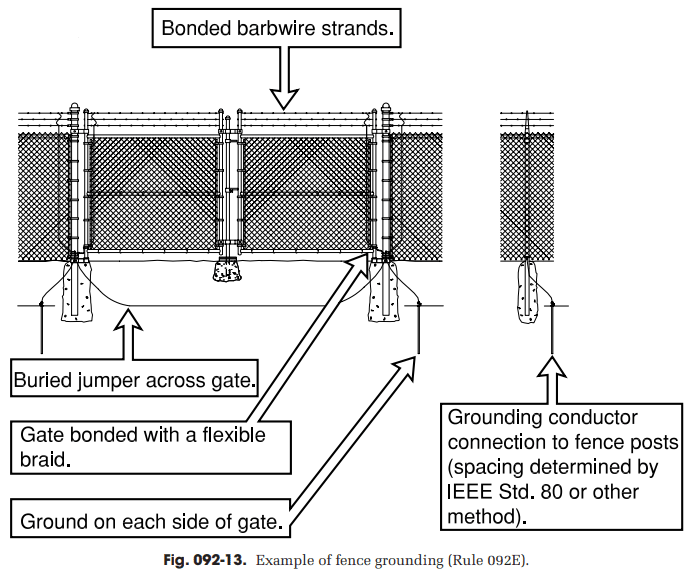Does the grounding discharge remain confined solely to the scenario depicted in figure 092-13, where the cyclone mesh and barbed wires are connected to the ground?

Alternatively, is it necessary to expand this approach and connect the cyclone mesh and barbed wires to the ground at various additional points? If so, at what distance intervals should these additional connections be made, both in external areas and the central area?
Furthermore, would it be appropriate to utilize a #2 gauge cable to link the cyclone mesh and barbed wires to the grounding conductor? Additionally, what type of material is recommended for the connection joints in this context?

Alternatively, is it necessary to expand this approach and connect the cyclone mesh and barbed wires to the ground at various additional points? If so, at what distance intervals should these additional connections be made, both in external areas and the central area?
Furthermore, would it be appropriate to utilize a #2 gauge cable to link the cyclone mesh and barbed wires to the grounding conductor? Additionally, what type of material is recommended for the connection joints in this context?
